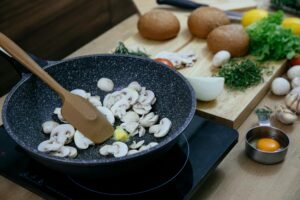What Makes Junmai Sake Different from Other Sake Varieties?
Sake, often called Japanese rice wine, boasts a rich heritage and a diverse range of varieties. Among these, Junmai Sake holds a distinct position. To truly appreciate what sets Junmai sake apart, one must delve into its production process, taste profile, and the traditions that surround it.
Understanding the Basics of Sake
Sake, brewed from rice, water, yeast, and koji mold, varies significantly in flavor and quality based on these ingredients and the techniques employed. The primary categories of sake include Junmai, Honjozo, Ginjo, and Daiginjo, each distinguished by its rice polishing ratio and brewing additives.
The Essence of Junmai Sake
Junmai translates to “pure rice” in Japanese, emphasizing its straightforward and unadulterated nature. This type of sake is brewed using only rice, water, yeast, and koji, without any added alcohol or sugar. This purity mandates a minimum rice polishing ratio of 70%, meaning at least 30% of the outer rice grain is polished away to enhance the quality and flavor.
Rice Polishing Ratio
One of the most critical aspects of sake production is the rice polishing ratio. For Junmai sake, the rice must be polished to at least 70%, though many premium varieties exceed this requirement. This process removes impurities and proteins that can affect the taste, leaving behind the starchy core of the rice, which contributes to a cleaner, more refined flavor.
Koji Mold’s Role
Koji mold, or Aspergillus oryzae, is integral to the brewing process. It converts the rice starches into fermentable sugars, a process known as saccharification. This mold not only initiates fermentation but also imparts a unique umami flavor to the sake, enhancing its depth and complexity.
Fermentation Process
The fermentation process for Junmai sake is meticulous and time-consuming. Unlike other sake types where distilled alcohol might be added to adjust flavors or aromas, Junmai relies solely on the natural fermentation of its ingredients. This results in a sake that is typically richer and fuller-bodied, with a pronounced umami character.
Flavor Profile of Junmai Sake
Junmai sake is celebrated for its robust and intricate flavor profile. Its taste often encompasses rich umami flavors, with earthy, nutty, and sometimes slightly sweet undertones. The absence of added alcohol allows the natural flavors of the rice and koji to shine through, creating a well-rounded and satisfying beverage.
Aroma and Mouthfeel
Junmai sake is known for its complex aroma, which can include notes of dried fruit, nuts, and earthy elements. The mouthfeel is generally full and rich, providing a substantial experience on the palate. This complexity makes Junmai sake a versatile companion to a wide range of dishes, enhancing both simple and elaborate culinary creations.
Serving Temperature
Junmai sake can be enjoyed at various temperatures, each enhancing different aspects of its flavor. Served warm, it tends to exhibit more pronounced umami and savory notes, making it ideal for hearty dishes. When served chilled, it presents a cleaner, crisper profile, highlighting its subtle sweetness and acidity.
Junmai Sake Versus Other Sake Varieties
The primary distinction between Junmai sake and other sake varieties lies in its purity and the absence of added alcohol. This difference influences not only the flavor but also the body and aroma of the sake.
Honjozo Sake
Honjozo sake includes a small amount of distilled alcohol, added to smooth out the flavors and aromas. While this can create a lighter, more fragrant sake, it often lacks the depth and richness found in Junmai.
Ginjo and Daiginjo Sake
Ginjo and Daiginjo sake are premium categories known for their high rice polishing ratios (60% and 50% respectively or lower). These sakes are often lighter and more fragrant, with floral and fruity notes. The addition of a small amount of distilled alcohol helps to enhance these characteristics. However, despite their elegance, they typically do not match the full-bodied, umami-rich profile of Junmai sake.
Culinary Pairings with Junmai Sake
Junmai sake’s versatile and robust flavor makes it an excellent accompaniment to a variety of foods. Its umami richness pairs well with grilled meats, hearty stews, and savory dishes featuring mushrooms or soy sauce. It also complements fermented foods like miso and pickles, enhancing their deep, complex flavors.
Traditional Japanese Cuisine
In traditional Japanese cuisine, Junmai sake is often enjoyed with kaiseki (multi-course meals), as well as with simpler fare such as sushi and sashimi. Its full-bodied nature balances the delicate flavors of raw fish and complements the umami of soy sauce and wasabi.

Western Cuisine
Junmai sake also pairs well with Western dishes. Its robust profile complements rich, savory dishes like roast meats, stews, and aged cheeses. The umami flavors in Junmai sake enhance the taste of grilled vegetables and mushroom-based dishes, making it a versatile choice for fusion cuisine.
Junmai Sake Production Regions
The production of Junmai sake is an art form that varies by region in Japan, each imparting its own unique characteristics to the final product. Some of the most renowned regions include Niigata, Hyogo, and Kyoto, each celebrated for their distinct styles and flavors.
Niigata
Known as the “kingdom of sake,” Niigata is famous for producing sake that is clean, crisp, and smooth. The region’s cold climate and pristine water contribute to the creation of delicate and refined Junmai sake varieties. The sake from this region often exhibits a light, refreshing taste with subtle floral and fruity notes.
Hyogo
Hyogo is home to the famed Nada district, one of Japan’s largest and most prestigious sake-producing areas. The sake from Hyogo is typically robust and full-bodied, with a rich umami flavor. The high-quality Yamada Nishiki rice grown in the region is a key ingredient in many of the finest Junmai sakes.
Kyoto
Kyoto‘s Fushimi district is another prominent sake-producing region. The soft, pure water of Fushimi is ideal for brewing smooth and mellow Junmai sake. Sake from this region often has a gentle sweetness and a silky texture, making it exceptionally palatable.
The Cultural Significance of Junmai Sake
Beyond its unique flavor and production methods, Junmai sake holds significant cultural importance in Japan. It is deeply intertwined with Japanese traditions, ceremonies, and everyday life.
Ceremonial Uses
Junmai sake is frequently used in Shinto rituals and ceremonies, symbolizing purity and divine blessings. It is often offered to deities in shrines and used in celebrations such as weddings and New Year’s festivities. This traditional use underscores the cultural reverence for sake as more than just a beverage but a conduit for spiritual and social bonds.
Sake Tasting and Appreciation
The appreciation of Junmai sake involves more than just drinking; it is an immersive experience that engages all the senses. Sake tasting events, known as “kikisake,” allow enthusiasts to explore the diverse flavors and aromas of various Junmai sakes. These events often include education on proper tasting techniques, enhancing the overall appreciation of the sake’s complexity.
Sake Ware
The vessels used to drink Junmai sake, known as sake ware, play a crucial role in the overall experience. Traditional cups such as “ochoko” and “sakazuki” are designed to enhance the aroma and flavor of the sake. The choice of vessel can affect the perception of the sake, making the drinking experience more enjoyable and culturally rich.
Modern Innovations in Junmai Sake
While Junmai sake is steeped in tradition, modern sake brewers are continually innovating to enhance and diversify its appeal. Advances in brewing technology and creative approaches to flavor profiles are contributing to the evolution of Junmai sake.
Yeast Strain Development
Brewers are experimenting with different yeast strains to create new and exciting flavors. These innovative strains can produce unique aromatic compounds, resulting in Junmai sakes with distinctive floral, fruity, or even spicy notes. This experimentation is expanding the range of flavors available, appealing to a broader audience.
Aging Techniques
The practice of aging sake, known as “koshu,” is gaining popularity. Aged Junmai sake develops deeper, more complex flavors over time, often with pronounced caramel, nutty, and earthy notes. This aging process is akin to the aging of fine wines and is attracting connoisseurs who appreciate the depth and richness that time imparts.
Sustainability Practices
Modern sake production is increasingly focused on sustainability. Brewers are adopting eco-friendly practices such as organic farming, water conservation, and waste reduction. These efforts not only contribute to environmental preservation but also resonate with consumers who value sustainability in their purchasing decisions.
Exploring Junmai Sake: A Journey of Taste
For those new to Junmai sake, embarking on a tasting journey can be a rewarding experience. Here are some tips to get started:
Start with a Variety of Brands
Begin by sampling Junmai sake from different regions and producers to understand the range of flavors and styles available. Each brewery has its own unique approach, resulting in distinct taste profiles.
Experiment with Serving Temperatures
Try Junmai sake at various temperatures to discover how it affects the flavor. Warm sake can enhance umami and sweetness, while chilled sake often highlights acidity and freshness.

Pair with Diverse Foods
Pair Junmai sake with a wide range of foods to see how it complements and enhances different flavors. From traditional Japanese dishes to Western cuisine, Junmai sake’s versatility makes it a delightful addition to any meal.
Conclusion
Junmai sake’s pure and robust nature, combined with its deep cultural roots and modern innovations, makes it a fascinating subject for exploration. By appreciating its production methods, savoring its complex flavors, and understanding its cultural significance, one can truly grasp what makes Junmai sake a distinguished and beloved variety. Whether you are a seasoned sake enthusiast or a curious newcomer, the world of Junmai sake offers endless opportunities for enjoyment and discovery.















